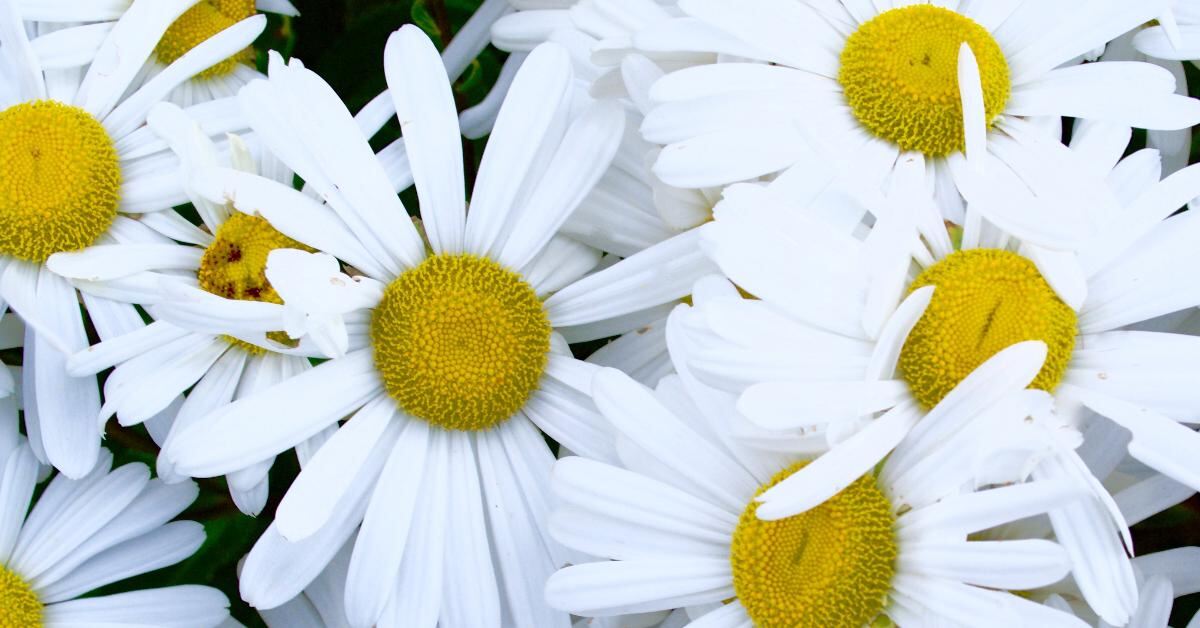Exploring the world of flora reveals an astonishing diversity of colors, shapes, and fragrances, especially when we delve into flowers that begin with D. From the delightful daisies that dot meadows to the dramatic dahlias that dazzle in autumn gardens, each flower brings its unique charm and beauty.
In this article, we will introduce you to 12 amazing flowers starting with D, showcasing their distinctive characteristics and how they can enhance your garden. Whether you’re a seasoned gardener or a budding floral enthusiast, these flowers offer something special for everyone, promising to enrich your outdoor space with their vibrant blooms and captivating presence.
List of Flowers That Start with D
- Dahlia
- Daisy (Bellis perennis)
- Delphinium
- Dianthus
- Dicentra (Bleeding Heart)
- Digitalis (Foxglove)
- Dodecatheon (Shooting Star)
- Doronicum (Leapard’s Bane)
- Dracunculus Vulgaris (Voodoo Lily)
- Daphne
- Dietes
- Daviesia
1. Dahlia
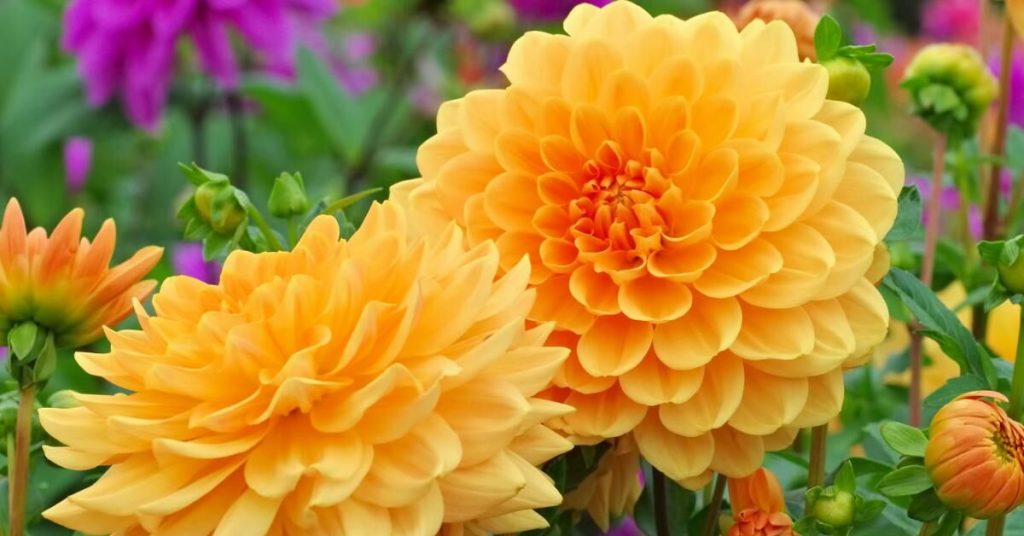
The dahlia is a vibrant and diverse genus of bushy, tuberous plants known for their elaborate and colorful flowers. Dahlias come in a wide range of sizes, colors, and flower shapes, including single, double, cactus, and dinner plate varieties, making them highly versatile in landscape design.
They bloom from midsummer through fall, providing a late-season burst of color when many other flowers have faded. Dahlias prefer well-drained soil and a sunny location to thrive. They are also popular for cutting gardens, as their flowers have a long vase life.
Watering needs – Regular watering, especially during dry periods, to keep the soil evenly moist.
Bloom color – A wide spectrum, including red, pink, orange, yellow, lavender, white, and bicolor.
Hardiness zone – 8 to 11 as perennials, but often grown as annuals in cooler climates.
Mature height – Ranges from 1 to 6 feet (0.3 to 1.8 meters), depending on the variety.
Sunlight exposure – Full sun to ensure vigorous growth and abundant flowering.
2. Daisy
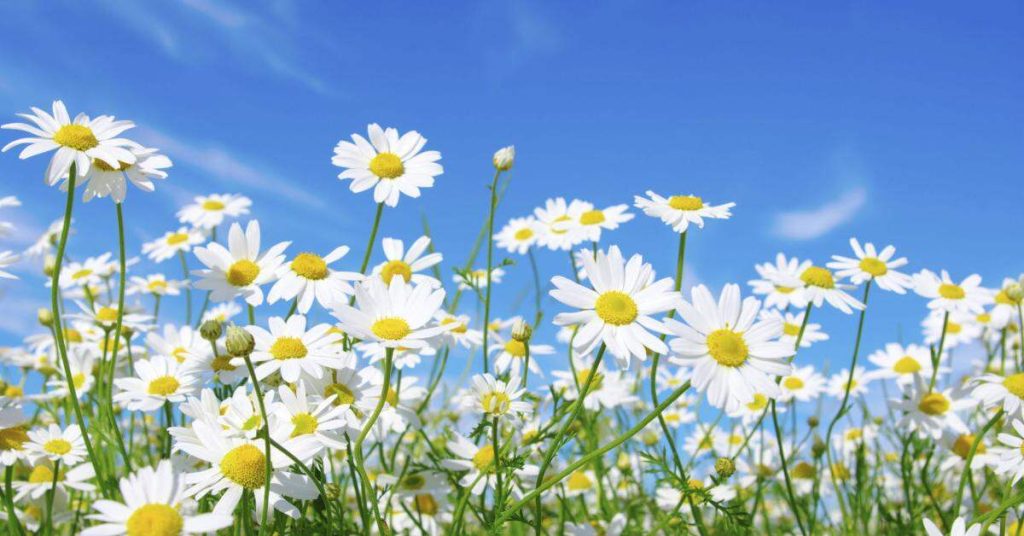
Daisy (Bellis perennis) is one of the most recognized and beloved flowers, symbolizing innocence and purity. The classic daisy features a sunny yellow center surrounded by white petals, though cultivars may vary in color. Daisies are hardy perennials that can thrive in a range of conditions, but they flourish best in full sun and well-drained soil. Their simplicity and charm make them a favorite for gardens, meadows, and as a cheerful cut flower. Daisies also attract pollinators, supporting biodiversity in the garden.
Watering needs – Moderate, but established plants are quite drought-tolerant.
Bloom color – Primarily white with a yellow center, though cultivars may offer pink, red, or purple hues.
Hardiness zone – 4 to 8.
Mature height – Typically 1 to 3 feet (0.3 to 0.9 meters).
Sunlight exposure – Full sun to partial shade, with more blooms in sunnier spots.
3. Delphinium
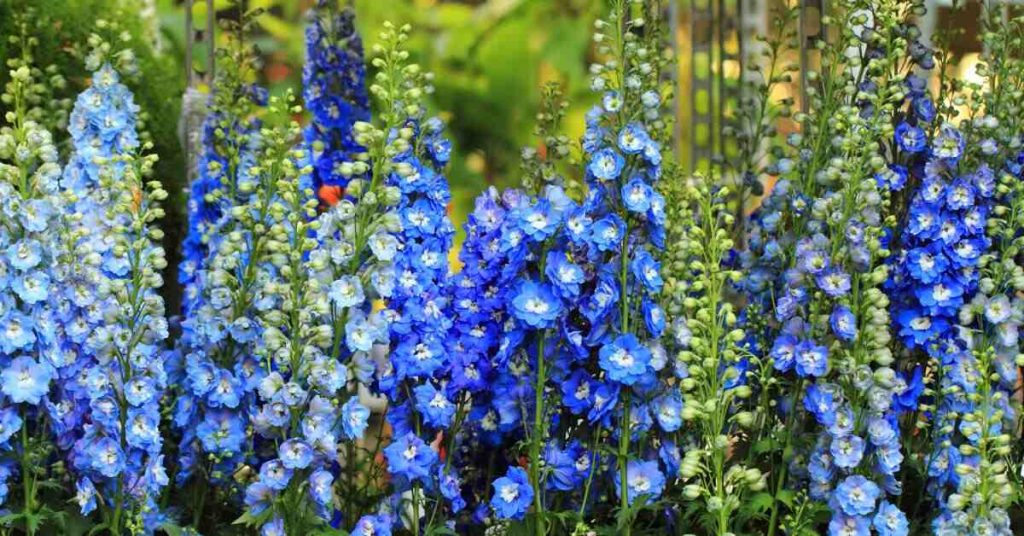
Delphinium is a genus of stately, towering perennials known for their spikes of showy flowers in shades of blue, purple, white, and pink. Delphiniums are often used as a backdrop in garden borders due to their impressive height and striking color. These plants prefer cool climates and do best in well-drained soil and full sun. They require regular watering and may need staking to support their tall flower spikes. Delphiniums are ideal for adding vertical interest to the garden and attract bees and butterflies.
Watering needs – Keep soil consistently moist but not waterlogged.
Bloom color – Blue, purple, pink, and white.
Hardiness zone – 3 to 7.
Mature height – 3 to 8 feet (0.9 to 2.4 meters), depending on the variety.
Sunlight exposure – Full sun to achieve maximum bloom potential.
4. Dianthus
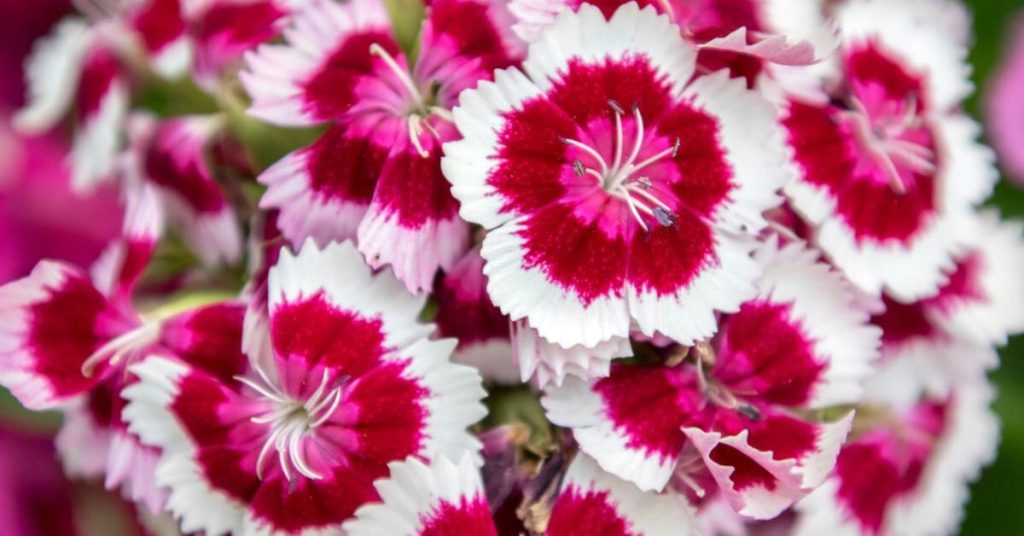
Dianthus includes a range of species and cultivars often referred to as “pinks” due to the fringed petal edges that look as though they were cut with pinking shears. Dianthus flowers are known for their spicy fragrance and long blooming period. Colors include pink, red, white, and bicolor. These plants prefer full sun and well-drained, slightly alkaline soil. Dianthus makes excellent borders, rock garden additions, and container plants. They’re also popular as cut flowers due to their appealing scent and color variety.
Watering needs – Moderate, allowing soil to dry slightly between waterings.
Bloom color – Pink, red, white, and bicolor.
Hardiness zone – 3 to 9.
Mature height – 6 inches to 3 feet (15 cm to 0.9 meters), depending on the type.
Sunlight exposure – Full sun for best flowering results.
5. Dicentra
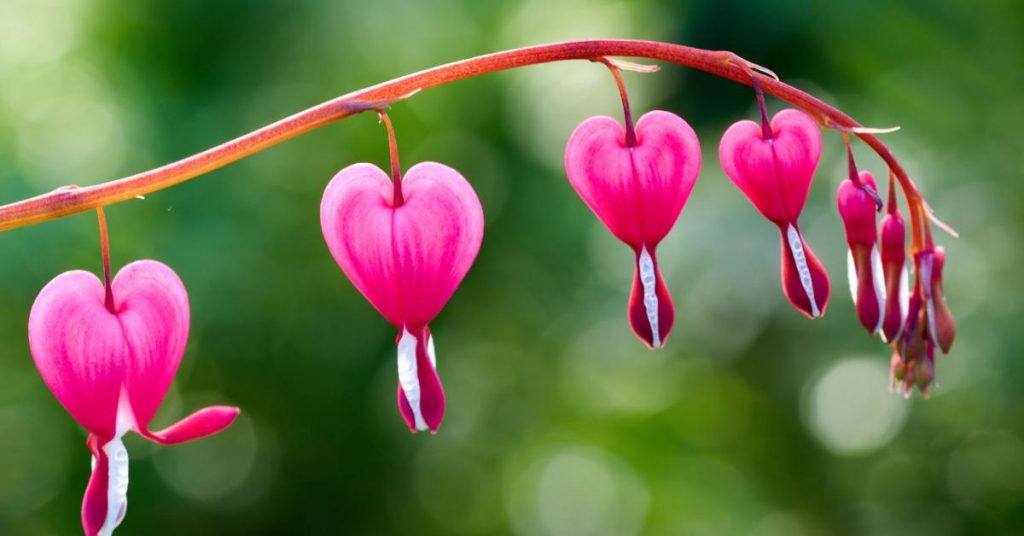
Dicentra, also known as bleeding heart, is renowned for its heart-shaped flowers that dangle from arching stems, creating a captivating display in the spring garden. The flowers are most commonly pink and white but can also be found in pure white and red varieties.
Dicentra prefers shady conditions, making it an excellent choice for woodland gardens or shaded borders. The plant thrives in moist, well-drained soil rich in organic matter. After flowering, the foliage may die back, so it’s beneficial to plant Dicentra alongside late-emerging perennials to fill the gap.
Watering needs – Regular watering to maintain evenly moist soil, especially in dry conditions.
Bloom color – Pink, white, and red.
Hardiness zone – 2 to 9.
Mature height – 1 to 3 feet (0.3 to 0.9 meters).
Sunlight exposure – Partial shade to full shade, ideal for cooler, shaded areas of the garden.
6. Digitalis
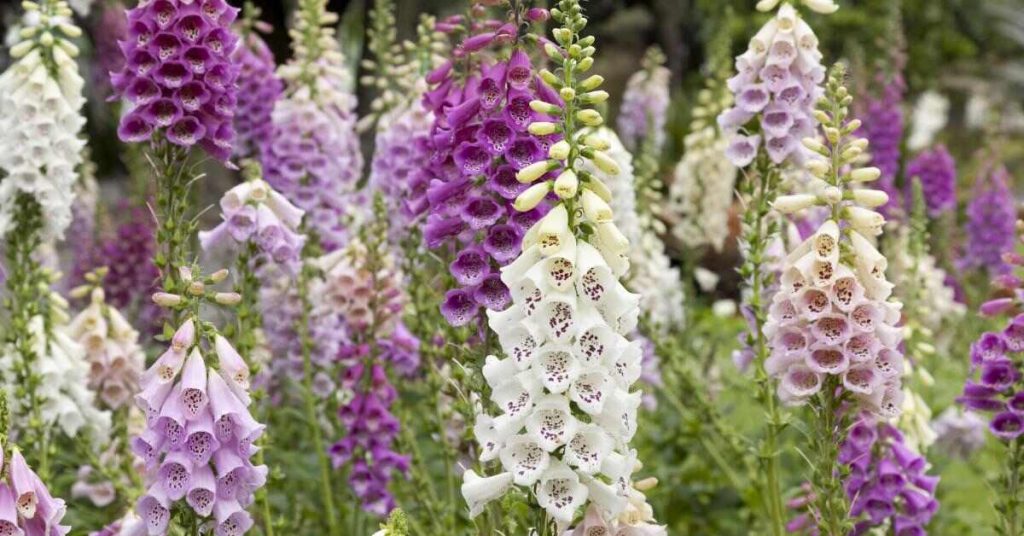
Digitalis, commonly known as foxglove, is a striking biennial or short-lived perennial that towers over the garden with its tall spikes of tubular flowers. The flowers, which come in shades of pink, purple, white, and yellow, are particularly attractive to bees and hummingbirds. Digitalis thrives in well-drained soil and partial shade, although it can tolerate full sun in cooler climates. Due to its height and dramatic flowering, foxglove is a fantastic choice for adding vertical interest to borders and woodland gardens.
Watering needs – Moderate, with more frequent watering in full sun.
Bloom color – Pink, purple, white, and yellow.
Hardiness zone – 4 to 9.
Mature height – 2 to 5 feet (0.6 to 1.5 meters).
Sunlight exposure – Partial shade to full sun, depending on the climate.
7. Dodecatheon
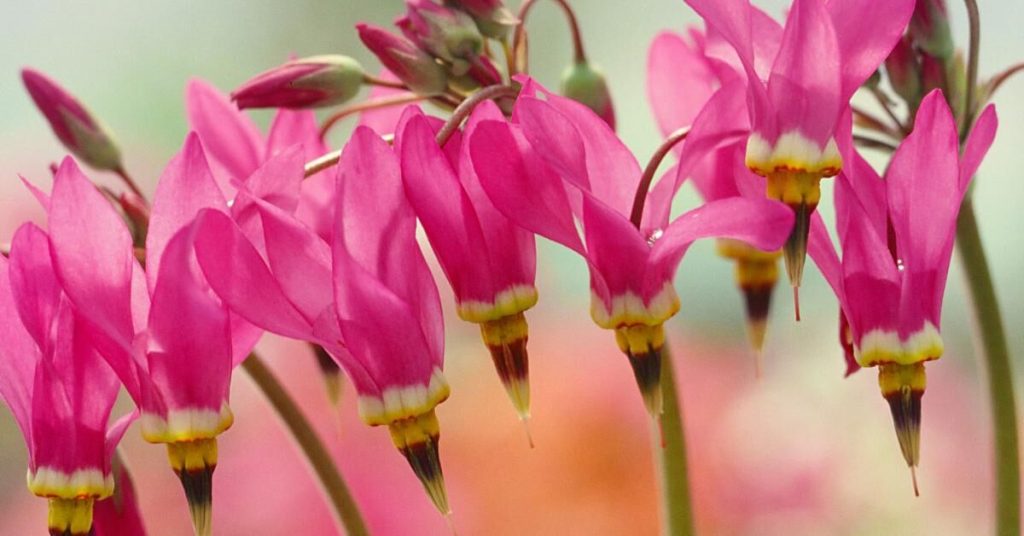
Dodecatheon, also known as shooting star, is a charming perennial wildflower that produces unique, reflexed flowers, resembling a shooting star. The blooms come in shades of pink, lavender, and white and are a delightful addition to shade gardens and naturalized woodland areas. Dodecatheon prefers moist, well-drained soil in part to full shade. This plant is an excellent choice for gardeners looking to create a natural, wildflower look in their landscape.
Watering needs – Consistent moisture, especially during the growing season.
Bloom color – Pink, lavender, and white.
Hardiness zone – 4 to 8.
Mature height – 6 inches to 2 feet (15 cm to 0.6 meters).
Sunlight exposure – Partial to full shade, perfect for understory plantings and shaded garden nooks.
8. Doronicum
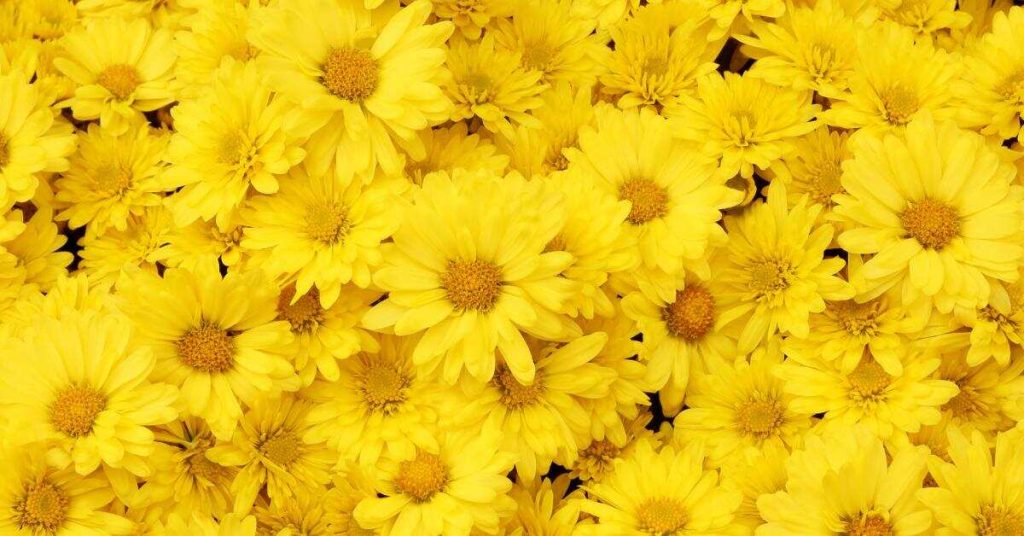
Doronicum, known as leopard’s bane, is a cheerful, early-spring blooming perennial that produces bright yellow, daisy-like flowers. It’s one of the first perennials to bloom, providing a much-needed splash of color in early spring when most of the garden is still waking up.
Doronicum prefers cool, moist conditions and can thrive in partial shade or full sun if kept adequately watered. It’s an excellent plant for woodland gardens, shady borders, or as an underplanting for taller shrubs. Leopard’s bane is also valued for its ability to attract early-season pollinators to the garden.
Watering needs – Keep soil consistently moist, particularly in full sun.
Bloom color – Bright yellow.
Hardiness zone – 4 to 8.
Mature height – 1 to 2 feet (0.3 to 0.6 meters).
Sunlight exposure – Partial shade to full sun, with a preference for cooler conditions.
9. Dracunculus Vulgaris
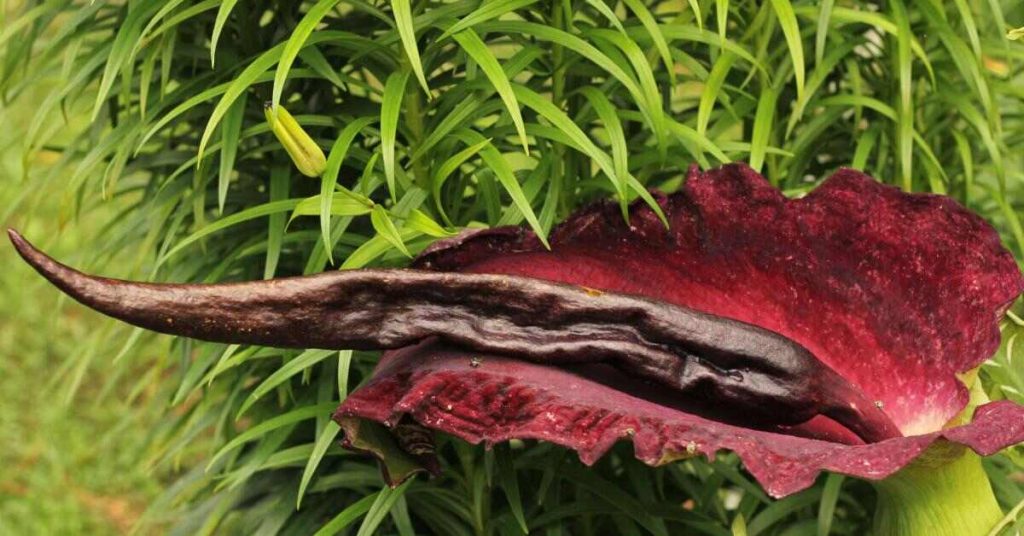
Dracunculus vulgaris, commonly known as dragon arum or voodoo lily, is a striking and unusual plant known for its large, dramatic spathes and spadices, which resemble a dragon’s tongue. The flower emits a strong, unpleasant odor reminiscent of rotting meat, which attracts pollinating insects. This plant is a conversation starter in the garden, with its unique appearance and scent. It prefers a sunny to partly shaded location and well-drained soil. Despite its exotic look, dragon arum is surprisingly hardy and easy to grow.
Watering Needs – Moderate, allowing soil to dry out slightly between waterings.
Bloom color – Dark purple to black.
Hardiness zone – 5 to 9.
Mature height – 2 to 3 feet (0.6 to 0.9 meters).
Sunlight exposure – Full sun to partial shade.
10. Daphne
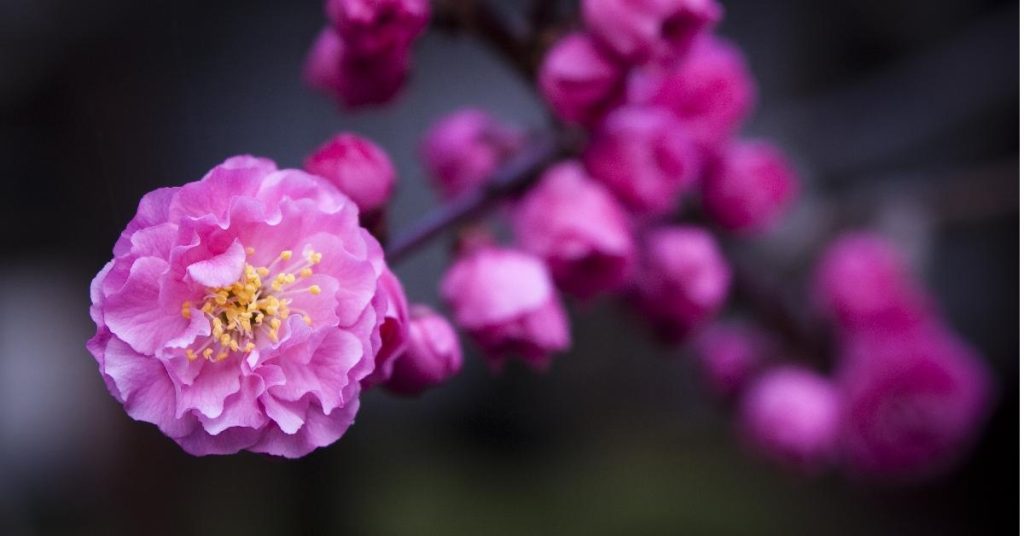
Daphne, a genus of shrubs known for their fragrant flowers and attractive berries, adds both beauty and aroma to the garden. Daphne blooms in late winter to early spring, offering a sweet scent when few other plants are flowering. The shrubs require well-drained soil and do not like to be moved once established. They are perfect for borders, near walkways, or in mixed shrub borders where their fragrance can be appreciated up close. Care should be taken, as all parts of the plant are toxic if ingested.
Watering needs – Moderate, with well-drained soil to prevent root rot.
Bloom color – White, pink, lavender.
Hardiness zone – 4 to 9, depending on the species.
Mature height – 2 to 4 feet (0.6 to 1.2 meters).
Sunlight exposure – Partial shade; shelter from harsh afternoon sun.
11. Dietes
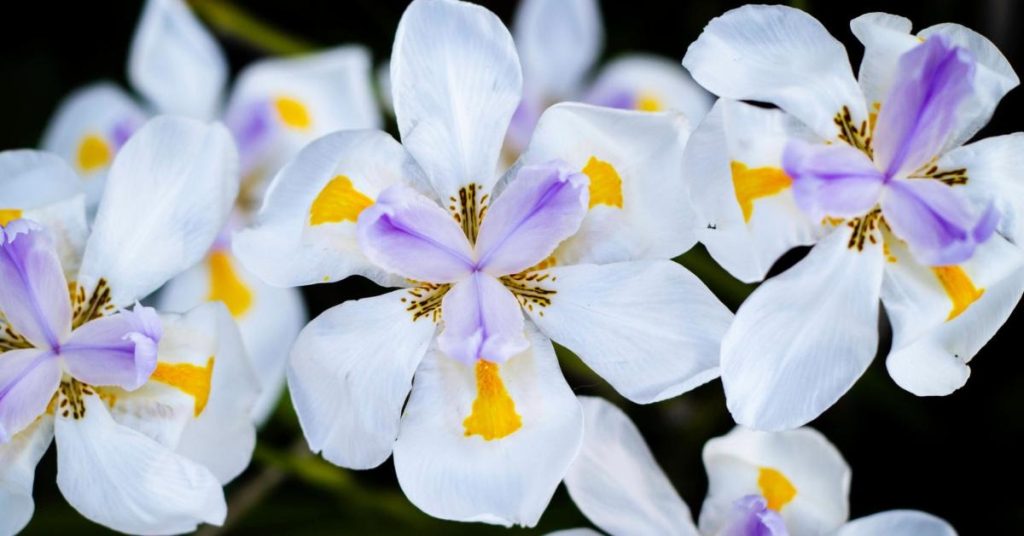
Dietes, also known as wild iris or fortnight lily, is a hardy, clump-forming perennial with sword-like leaves and delicate, iris-like flowers. It blooms in waves throughout the summer, with each flower lasting just one day. Dietes is drought-tolerant once established, making it an excellent choice for water-wise gardens, sunny borders, or as a structural element in contemporary garden designs. It thrives in full sun to partial shade and requires minimal care, making it suitable for busy or novice gardeners.
Watering needs – Low; water deeply but infrequently once established.
Bloom color – White, yellow, or light purple, often with contrasting markings.
Hardiness zone – 8 to 11.
Mature height – 2 to 4 feet (0.6 to 1.2 meters).
Sunlight exposure – Full sun to partial shade.
12. Daviesia
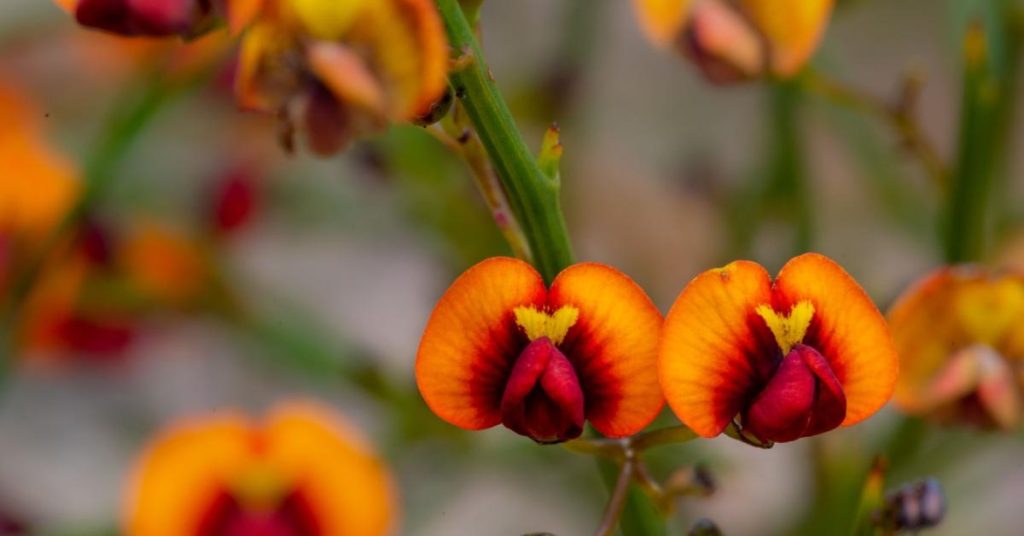
Daviesia, part of the pea family, is notable for its unique, angular foliage and striking, pea-like flowers. Native to Australia, these shrubs or small trees are adapted to poor soils and dry conditions, making them excellent candidates for xeriscaping or native plant gardens. The flowers, which appear in spring and early summer, attract bees and other pollinators, adding to the biodiversity of the garden. Daviesia species require well-drained soil and full sun, and they are best suited to gardens in warmer climates or as potted specimens in cooler regions.
Watering needs – Low; drought-tolerant once established.
Bloom color – Yellow, red, orange, or a combination thereof.
Hardiness zone – 9 to 11.
Mature height – Varies widely among species, from 2 to 10 feet (0.6 to 3 meters).
Sunlight exposure – Full sun for optimal flowering and growth.
